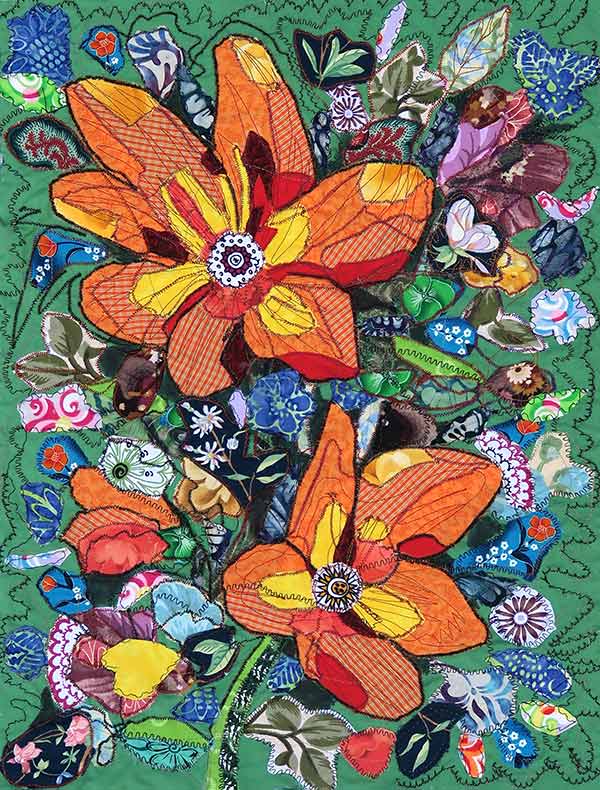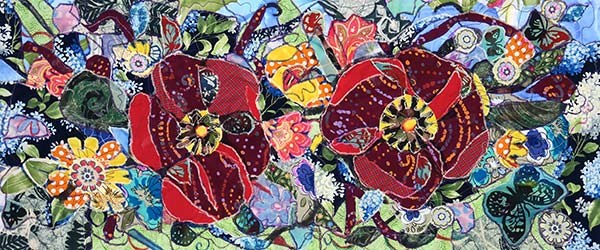Subtotal: $
Checkout
Blessed Botany
A review of Philosophy in the Garden by Damon Young
By Nick Ripatrazone
June 18, 2020
To define the wilderness, it would seem, we need to define borders. Cartographers, ecologists, botanists, storytellers, philosophers: there is a long list of those concerned with the boundary between the wild and otherwise. Yet both terms – wild and otherwise – are fraught with ambiguity. How can you define a term like wilderness that assumes a level of difference from its surroundings, when those surroundings are so vague?
To imagine the wilderness as a “supposedly irrational and chaotic sphere represented by the primeval forest, the dangerous shadow place on the other side of the boundary of order” is not only dangerous, it is dishonest, wrote Val Plumwood, the late Australian environmental philosopher. Much better is to “end the opposition between culture and nature, the garden and the wilderness, and to come to recognize ourselves at last as at home in both.”
Damon Young’s Philosophy in the Garden embraces the paradoxes of wilderness while also exploring the significant tradition of literature and thought influenced by gardens – “nature separated, bordered, transformed by humans.” Aristotle, who “taught his students as they strolled around the peripatoi, the colonnades,” was following in the footsteps of his own teacher, Plato, “whose Academy was also in a sacred grove.” Young traces this route to Theophrastus, who “wrote the first systematic treatise on botany”; Cicero; and even Augustine, who converted to Christianity in a garden of sorts: “I flung myself under a fig tree, and gave free course to my tears.”
Gardens, Young argues, “are a bulwark against distraction.” And philosophers are easily distracted – rhetorically, phenomenologically, practically. Aristotle meandered with his students in the Lyceum because the streets of Athens were “small and winding,” cluttered and claustrophobic. Gardens, by contrast, are “a fusion of two fundamental philosophical principles: humanity and nature.” Tending a garden is a painstaking, sometimes frustrating, but gently philosophical act.
Young – an author fluent in many genres, and an associate in philosophy at the University of Melbourne – arranges his book by focusing on the botanical ventures of various writers: Austen, Proust, Orwell, Dickinson, Sartre, and others. This is a pleasant thought – philosophers cultivate a garden as they cultivate their ideas – but it also feels rather neat. Were all of these writers and thinkers really gardeners in the conventional sense of the term? Is there even a conventional sense of a garden? Does Nietzsche’s “thinking tree” really count as a garden?
As if in response to this criticism, Young acknowledges that nature itself is an ambiguous concept – a “philosophical sponge, which absorbs interpretations.” For Aristotle, nature was organic and alive. Plato envisioned a “divine blueprint” while Epicurus wrote of fluttering, “random” atoms. If we consider gardens to be the deliberate, controlled synthesis of nature and other, then we should consider gardens to be comprehensive rather than exclusive. These are slippery definitions – more relational and contextual than concrete – but that is fine. Young’s breadth is wide, and a restrictive, contemporary idea of a garden would lead to a rather repetitive study.

Jenny Gneiting, Tiger Lily Image courtesy of the artist.
What best serves Philosophy in the Garden is its profiles of writers and thinkers; each chapter is a concise, self-contained essay. Marcel Proust, asthmatic and “alienated from the natural world,” had a garden of sorts in his room. While Proust wrote, he had three “miserable, hideous” Japanese bonsai next to him – a gift from a friend. Although he hated them at first, Proust said that bonsai were “trees for the imagination.”
Young writes that bonsai “offer the subtle intricacy of an everyday tree, but in a small, intimate size.” What at first disgusted Proust – “its often gnarled branches and tortured shapes” – later appealed to him. The bonsai’s withered look “evokes age and suffering,” and yet because its “roots, leaves, and branches are trimmed and trained into definite shapes and patterns,” the bonsai were continually reborn. Proust longed for the countryside, and the bonsai “were in keeping with an ongoing preoccupation of the author: they were small inscriptions offering immense visions.” They were a garden in his room.
“There was a mystery to the bulb’s seasonal labors, but also a cosmological and existential message.”
Emily Dickinson ascribed similar transcendence to her controlled interactions with nature. “I was reared in the garden,” she once said, and Young notes that her garden was one of the few things that drew her out of the house. Her section of the family garden was very ordered: “flowering shrubs, perennials, and bulbs.” According to Young, Dickinson thought “there was a mystery to the bulb’s seasonal labors, but also a cosmological and existential message, which affirmed her belief in life beyond death.” She would send flowers and her poems to friends – so that her words, and her garden, found their way into the world.
Other writers saw the garden as a more prosaic space. In 1946, wracked with tuberculosis, George Orwell rented Barnhill, his home on the Scottish island of Jura. He should have been resting in bed, but armed with scythe and pickaxe, he went outside on Jura – “cold, damp, remote and primitive” – and turned “stony, bone-dry patches of dirt and thistles” into a new garden. Young thinks such creation through stubbornness was no surprise for Orwell, for whom “questions of beauty quickly turned to those of ethics, politics, economics. So, gardening was the perfect pursuit for a cultivated pauper.” A few years later, the last lines of Orwell’s journal, written as he was dying, were about his garden.

Jenny Gneiting, Poppy Medley Image courtesy of the artist.
Young’s thesis finds its most apt reality in the chapter about Jean-Jacques Rousseau. In September 1765, Rousseau was in exile on Saint Pierre’s Island in Lake Bienne, Switzerland. His provocative book Emile: or on Education was published three years earlier, earning the consternation of Catholics and Protestants alike: “His books were burned; his life was threatened, and warrants were made out for his arrest.”
“Of all the habitations I have dwelt in (and I have had delightful ones),” Rousseau wrote in Reveries of a Solitary Walker, “none made me so truly happy, or left me so much tender regret” as Saint Pierre’s. He found solace in the island’s woods, spending “hours after breakfast, drawing and making notes, often taking home specimens to dissect or dry.” Young writes that for Rousseau, “botany was a method of perceiving, recognizing, and recovering what he valued most: nature.” He thought nature was, simply put, good. (This is in contrast to his countryman Jean-Paul Sartre, whose chapter is defined by absence or rejection of natural things.) For Rousseau, Young writes, nature “knew nothing of ethics or politics – theoretical notions of good and evil were meaningless. But he believed nature was morally exemplary nonetheless.”
“Botany has no real utility, except that a thinking, sensitive human being can draw from observing nature and the marvels of the universe.”
Botany, Rousseau’s form of gardening, was his window to that vision of nature. He cleverly wrote that botany “has no real utility, except that a thinking, sensitive human being can draw from observing nature and the marvels of the universe.” Botany was a way to teach people to see the world in a clear and specific way.
Young sees this as a crucial point about our relationship with nature. “Rousseau did not ask what the plant could do for him – what medicine or prestigious discovery it held,” Young writes. “He asked instead: What does the sweet pea’s flower do for the pea? What is the deeper pattern and purpose? In this, botany was a philosophical craft: a meditation on the basic physical and metaphysical principles, set down in nature by Rousseau’s Divine Being.”
Rousseau did not last long on the island. His notoriety catching up to him, he received a stern message from local authorities: Leave immediately, and never come back.
“Botany was briefly redemptive for Rousseau,” Young concludes, “because it allowed him to exercise his gifts for analysis, description, and speculation, without asking him to defend his theories or polish his façade.” A little wilderness in the form of a garden was exactly what Rousseau – who seemed to prefer the company of blessed nature to people – most needed. “I reckon those two months the happiest part of my life,” Rousseau later reflected, “and so happy, it would have sufficed for my whole existence.” A sacred garden indeed.
Already a subscriber? Sign in
Try 3 months of unlimited access. Start your FREE TRIAL today. Cancel anytime.







Don Olive
Philosophers and poets? Plato turned over in his grave at least a dozen times! Poets are thrice removed from reality and look in the wrong direction.